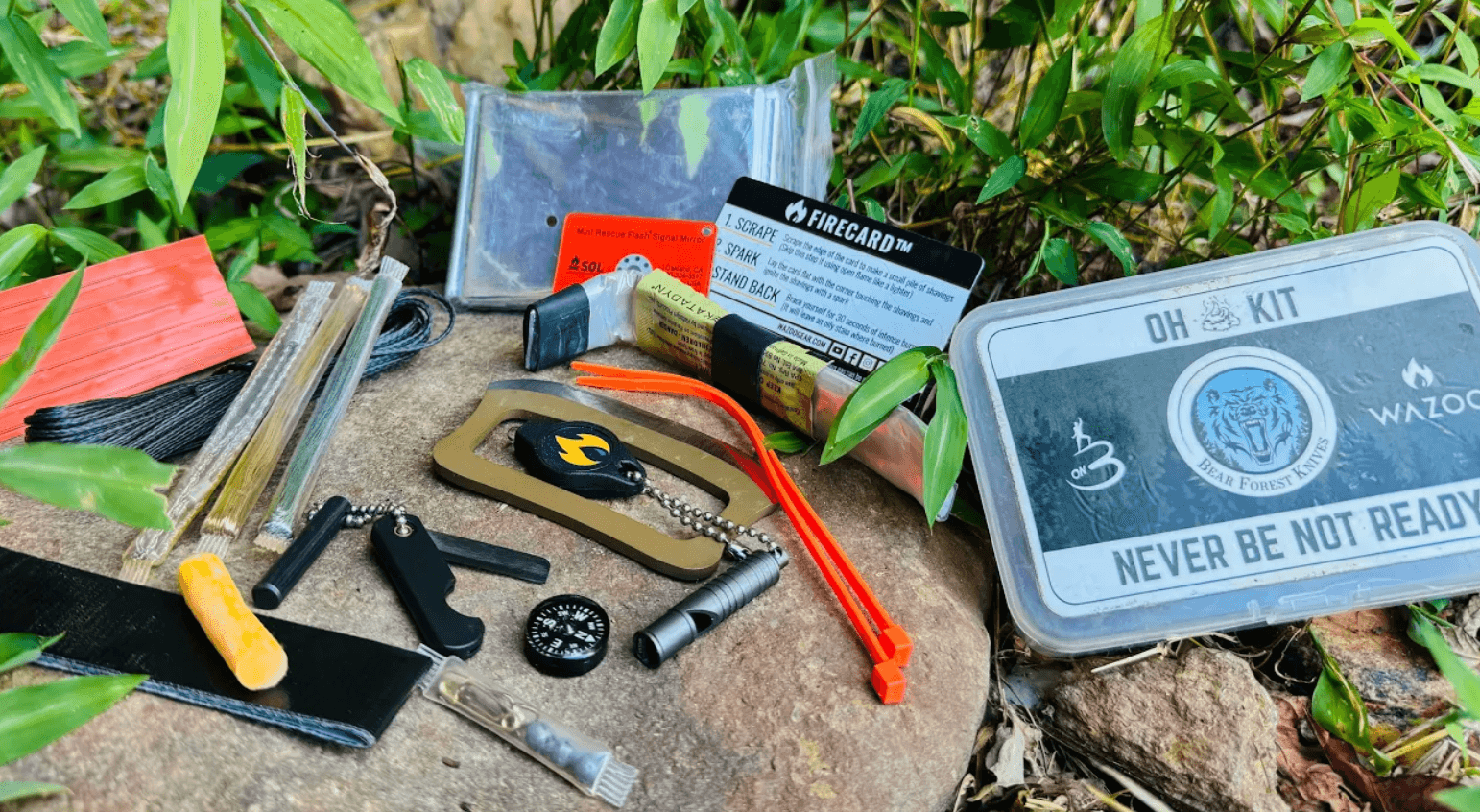
The morning of September 11th, 2001, changed everything I thought I knew about urban survival. Office workers who had never considered emergency preparedness suddenly found themselves navigating smoke-filled stairwells and debris-covered streets. Many survived because they made smart decisions with whatever they had on them. Others didn't make it home because they weren't prepared for the unthinkable.
Fast forward to today, and most city dwellers still walk around completely unprepared for the chaos that can erupt in any urban environment. Whether it's a natural disaster, civil unrest, infrastructure failure, or terrorist attack, your ability to escape and evade in an urban setting could mean the difference between making it home to your family or becoming another casualty statistic.
Here's the hard truth: your urban escape gear shouldn't look like you're heading to base camp on Everest. The best urban survival kit is the one you'll actually carry every single day, and it needs to blend seamlessly into city life while giving you the tools to handle whatever crisis comes your way.
What's the one piece of gear that could turn a potential disaster into just another story you tell your kids?
Most preppers focus on wilderness survival scenarios, but statistically, you're far more likely to face an emergency in an urban environment. According to FEMA, over 80% of Americans live in urban areas, yet less than 39% have any form of emergency plan or preparedness supplies readily available.
This pattern repeats in every urban crisis. During Hurricane Sandy, first responders reported finding families with elaborate home preparedness setups who were caught completely off-guard when they had to evacuate with nothing but the clothes on their backs.
The 2003 Northeast blackout exposed this gap perfectly, and we saw it repeated just months ago during the April 2025 Iberian Peninsula blackout. On April 28th, 2025, a massive power outage struck Spain and Portugal, affecting tens of millions of people across the peninsula. According to Spanish newswire EFE, "hundreds of thousands of people flooded the streets, forced to walk long distances home due to paralyzed metro and commuter train services, without mobile apps as telecommunications networks also faltered".
Public transportation, including subways and rail services, was suspended across Spain, with authorities working to rescue passengers from 116 stranded trains. The same pattern emerged that we've seen in every major urban crisis: people with elaborate home preparedness setups found themselves caught completely off-guard when they had to navigate the city with nothing but what they carried daily.
The stakes couldn't be higher. In urban crisis situations, you're dealing with:
Your urban escape gear needs to address these specific challenges while maintaining a low profile. The gray man concept isn't just tactical theory; it's survival necessity in the city.
The beauty of effective urban escape gear lies in its simplicity and dual-purpose functionality. You don't need to spend thousands on tactical equipment that screams "prepper" to everyone around you. Smart selection and strategic layering can create a comprehensive survival system that fits in a normal messenger bag or briefcase.
Core Principle: Every Item Must Serve Multiple Functions
Start with these budget-friendly essentials that I've field-tested in real urban scenarios:
Navigation and Communication Foundation Your smartphone is your primary navigation tool, but it's also your biggest vulnerability. I carry a compact USB power bank (the Anker PowerCore 10000 has never let me down) and a small solar panel that folds into a notebook-sized package. During Hurricane Sandy, when cell towers were down, having that extra battery life meant the difference between finding my family and spending the night in a shelter.
Water Security Without the Weight Forget carrying multiple water bottles. A single Sawyer Mini water filter weighs 2 ounces and can purify 100,000 gallons. Pair it with a collapsible Platypus bottle, and you've got indefinite water security from any urban source. I've used this setup to drink from park fountains, building HVAC condensation, and even questionable sources during infrastructure failures.
Multi-Tool Philosophy The Leatherman Wave+ is my go-to because it handles everything from wire cutting (essential for urban navigation) to first aid applications. But if budget is tight, a quality Swiss Army knife serves 90% of the same functions. The key is choosing tools you know how to use under stress.
Fire and Light Without Suspicion A simple Bic lighter and a small LED flashlight are obvious choices, but I also carry waterproof matches in a pill bottle and a small keychain light. Redundancy is critical, but it needs to look normal. That tactical flashlight that could blind an aircraft? Leave it at home. A normal-looking Streamlight Microstream is far more versatile.
Medical Preparedness That Fits Your urban first aid kit shouldn't look medical at all. I carry supplies in an old Altoids tin: bandages, antiseptic wipes, pain relievers, and a few prescription medications in unmarked containers. The goal is treating injuries without advertising that you're prepared.
Cash is King in Crisis Keep $200-300 in small bills hidden in your gear. When electronic systems fail, cash becomes the only currency that matters. I learned this during the 2017 Atlanta airport power outage when credit card systems were down for hours.
But here's the controversial part: your most expensive piece of gear might also be your most important. Quality boots that can handle extended walking on broken pavement, debris, and potentially hazardous materials. I've seen too many people attempt urban escapes in dress shoes or sneakers, only to develop foot injuries that turned minor inconveniences into major problems.
What's the one mistake that could turn your carefully planned escape route into a dangerous trap?
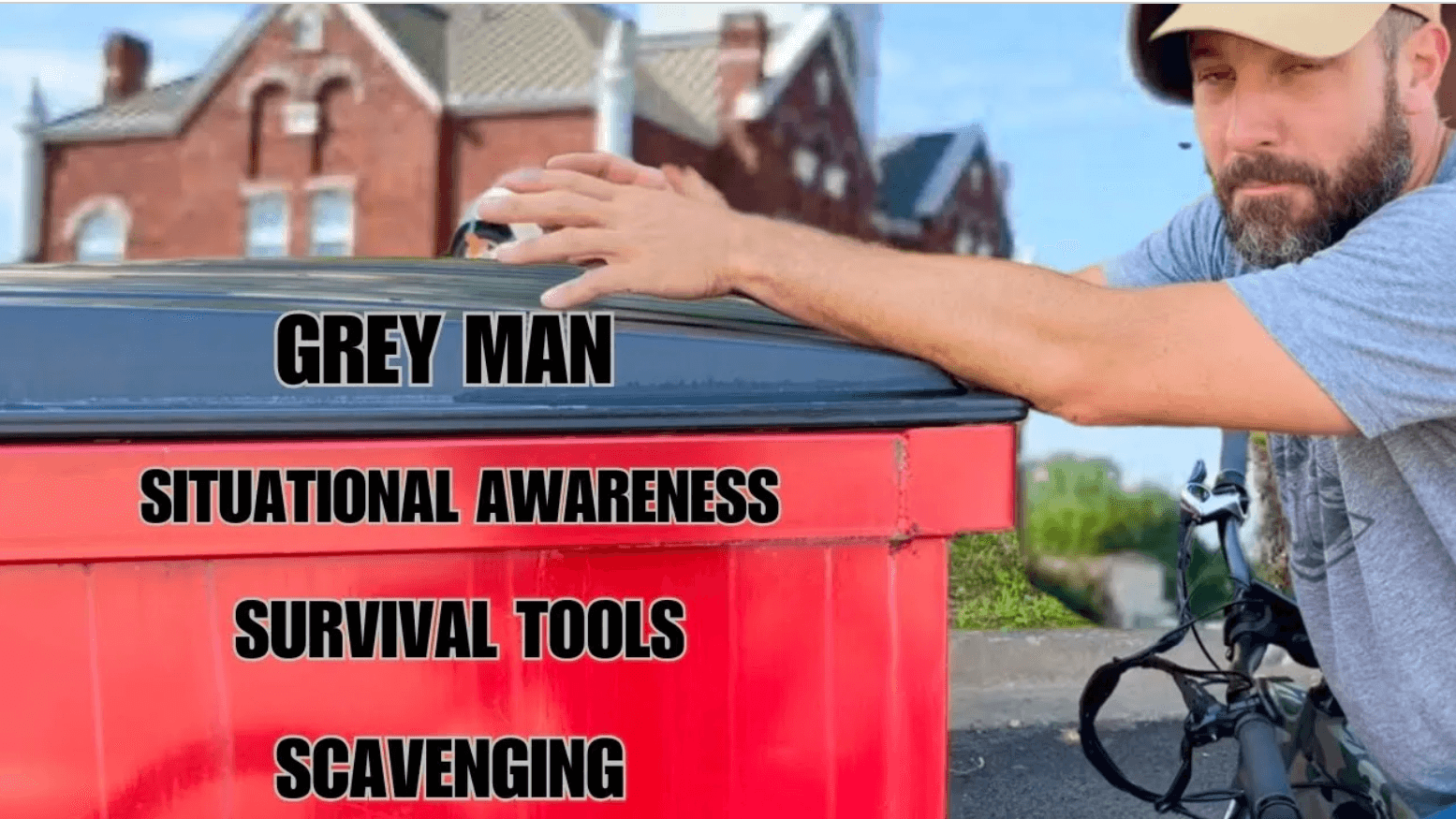
The biggest misconception about urban escape is that it's just wilderness survival in a concrete jungle. That thinking will get you killed. Urban environments require completely different tactics, and most survival "experts" have never actually tested their theories in real city crisis scenarios.
The Gray Man Advantage Your urban escape gear should make you invisible, not tactical. I watch guys load up with military surplus gear, thinking they look prepared. In reality, they've painted targets on their backs. During civil unrest, the person with the obvious survival gear becomes a resource magnet for desperate people.
Real gray man strategy means your gear blends into urban professional life. That tactical backpack? Replace it with a normal laptop bag. Those cargo pants with seventeen pockets? Swap them for business casual clothing with hidden compartments. The most effective urban survivors are the ones nobody notices.
Route Planning Beyond GPS Everyone relies on their phone's GPS, but what happens when cell towers fail or you need to avoid main roads? I maintain three different route options from every regular location to my home: the fast route, the covert route, and the chaos route.
The chaos route assumes main roads are blocked, public transportation is down, and you need to move through areas that might be experiencing civil unrest. This requires actual reconnaissance, not just studying maps. Walk these routes during different times of day. Note potential shelter points, water sources, and supply caches.
Communication Protocols Your family needs to know how to find you when normal communication fails. We establish rally points at specific locations with time windows. If I can't make it home by a certain time, my family knows to meet at predetermined locations. This isn't paranoia; it's practical planning that accounts for infrastructure failure.
Supply Caching Strategy Here's where most urban preppers go wrong: they think one bag will handle everything. Smart urban escape involves multiple cache points along your routes. I maintain small supply stashes at my office, in my vehicle, and at two intermediate locations between work and home.
These aren't elaborate bunkers. They're simple containers with water purification tablets, energy bars, cash, and backup communication devices. The key is accessibility during crisis and concealment during normal times.
Threat Assessment and Adaptation Urban escape requires constant situational awareness and threat evaluation. The route that's safe during a power outage might be deadly during civil unrest. Your gear selection needs to account for different threat scenarios.
For example, during infrastructure failures, your biggest concerns are navigation and basic needs. During civil unrest, concealment and avoiding confrontation become paramount. During natural disasters, debris navigation and injury treatment take priority. Your gear should be modular enough to emphasize different capabilities based on the situation.
The controversial truth? Sometimes the best urban escape strategy is staying put. Bugging in might be safer than attempting movement through chaotic urban environments. Your gear should support both options.
How do you know when movement becomes more dangerous than sheltering in place?
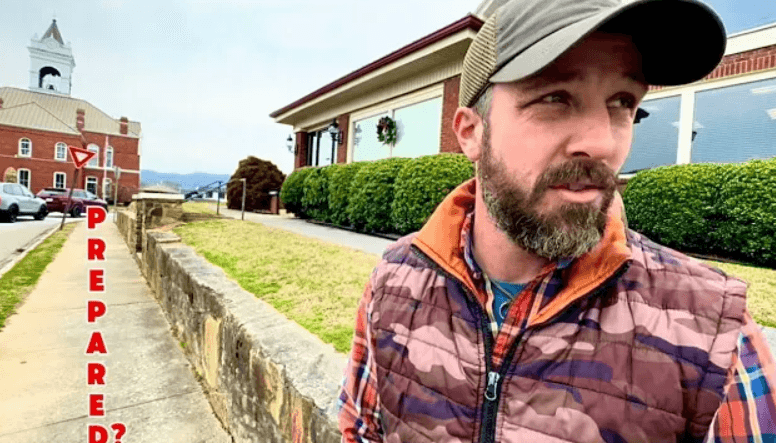
Urban escape planning becomes exponentially more complex when you're responsible for family members, especially children. The gear and strategies that work for a single adult don't scale effectively, and traditional prepping advice often ignores the realities of moving with kids through crisis situations.
Child-Specific Considerations Kids can't carry adult-sized gear, but they can carry their own age-appropriate supplies. My children each have their own "school emergency kit" that looks like a normal backpack but contains essentials: water pouches, energy bars, emergency blanket, whistle, and laminated cards with family contact information and rally points.
The key is making this feel normal, not scary. We practice "adventure walks" where we use some of these supplies during family hikes. Kids learn to use water purification tablets by "camping" in the backyard. Emergency preparedness becomes family bonding time rather than fear-based training.
Mobility Modifications Moving with children requires different route planning. That shortcut through the industrial area? Forget it when you're with kids. Your escape routes need to account for smaller legs, more frequent rest stops, and the need for bathroom facilities.
I've modified my urban escape gear to include child-specific items: lightweight stroller that can handle rough terrain, extra socks and shoes for growing feet, and entertainment supplies that don't require batteries. Bored, scared children become loud children, which compromises your gray man status.
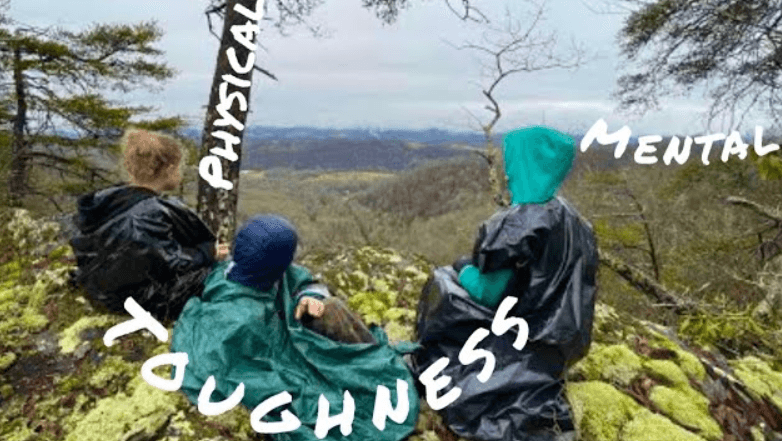
Communication with Minors Teaching children about emergency procedures without traumatizing them requires careful balance. We use code words for different scenarios: "Uncle Charlie is visiting" means we're implementing our home security protocol. "Going to see Grandma" means we're activating our bug-out plan.
Children need to understand these procedures without fully grasping the darker reasons behind them. Focus on the adventure and family togetherness aspects rather than the potential dangers.
Extended Family Coordination Your urban escape plan needs to account for elderly parents, disabled family members, and relatives who might not share your preparedness mindset. This often means maintaining additional gear and developing more complex coordination protocols.
I keep extra supplies specifically for family members who aren't prepared. Yes, it's additional weight and expense, but family loyalty trumps efficiency. During Hurricane Katrina, the survivors who did best were those who had planned for their entire family unit, not just themselves.
Teenage Challenges Teenagers present unique urban escape challenges. They're physically capable but often resistant to preparedness planning. They have their own social networks and may not want to abandon friends during crisis situations.
I've found success by giving teenagers specific responsibilities within our family emergency plan. They become communications coordinators or navigation assistants. Giving them important roles creates buy-in rather than resistance.
But here's the hard truth about family urban escape planning: it might not always be possible to keep everyone together. Having contingency plans for separated family members is emotionally difficult but practically necessary. Each family member needs to know how to survive independently and how to reconnect with the family unit.
What's your family's biggest vulnerability in an urban crisis scenario?
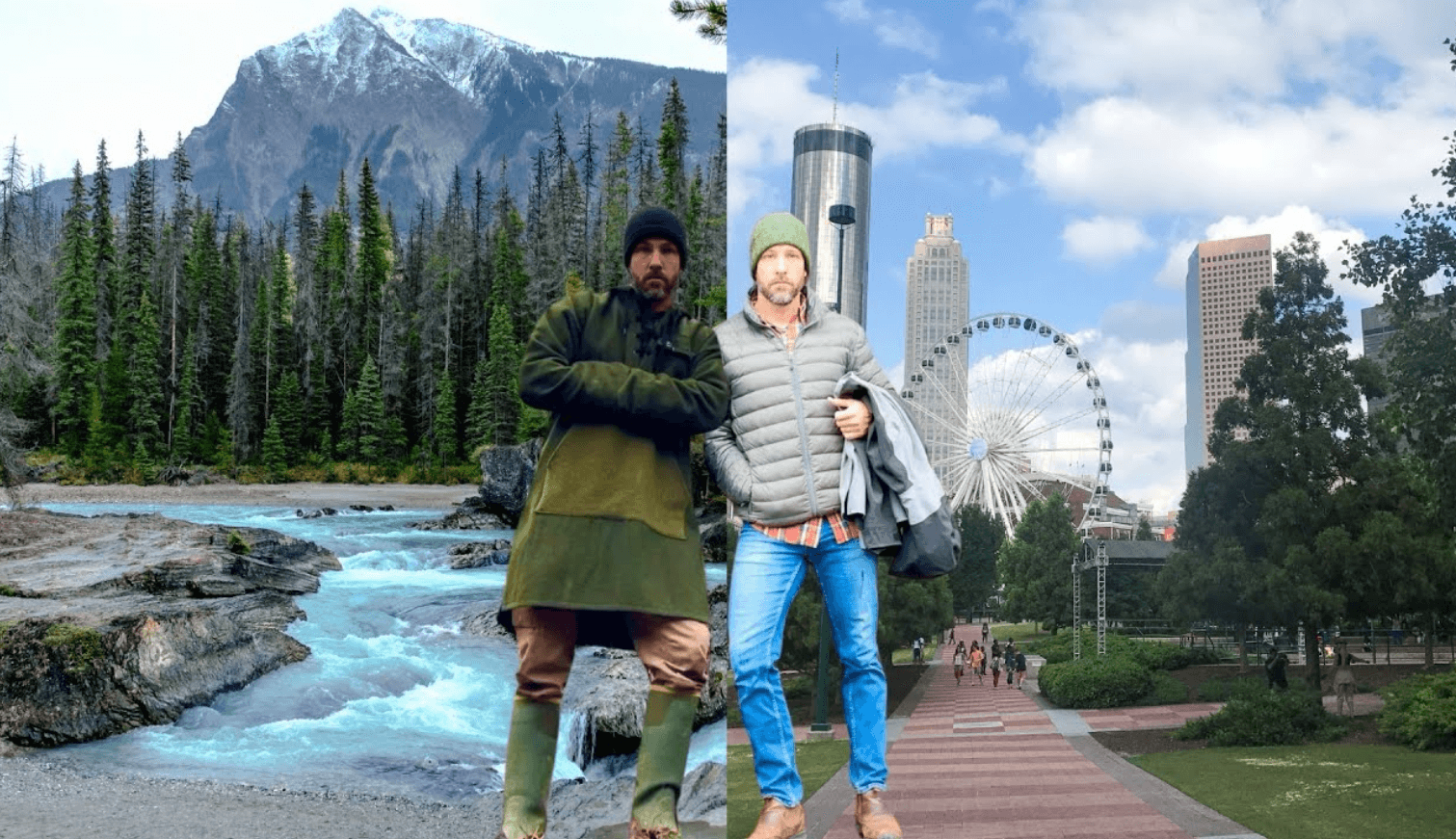
Urban escape gear can't be static. The supplies that serve you well during summer heat become inadequate when winter storms hit the city. Smart urban preppers rotate their gear seasonally and adjust their strategies based on weather patterns and seasonal urban challenges.
Winter Urban Considerations Cold weather urban escape requires completely different thinking. Hypothermia becomes a bigger threat than dehydration. Ice and snow create navigation hazards. Heating failures can turn normally safe buildings into death traps.
My winter urban kit includes: insulated gloves that still allow phone operation, micro spikes for ice traction, chemical hand warmers, emergency blanket, and extra socks. The weight penalty is worth it when you consider that most winter urban emergencies involve heating system failures or transportation shutdowns.
During the 2014 polar vortex in Chicago, I watched people attempt to walk home in business attire when public transportation failed. Many developed frostbite within hours. Having proper cold weather gear in your everyday carry can literally save fingers and toes.
Summer Heat Management Urban heat islands make summer emergencies particularly dangerous. Concrete and asphalt amplify temperatures, and air conditioning failures can quickly turn buildings into ovens. Your summer gear needs to emphasize cooling and hydration.
Electrolyte replacement becomes critical. I carry powder packets and high quality salt that can turn any water source into hydration solution. A cooling towel that activates with water provides immediate relief. I actually wear a bandanna almost every day for that very reason. It also serves many other benefits. Light-colored clothing reflects heat better than tactical black gear.
Storm Season Preparations Hurricane season requires specific urban escape modifications. High winds turn normally safe routes into debris fields. Flooding can make entire areas impassable. Storm surge can push saltwater miles inland, contaminating normal water sources.
Weather radio becomes essential when cell towers fail. Waterproof document storage protects identification and family photos. Cash needs to be distributed among multiple waterproof containers in case you lose part of your gear.
Gear Maintenance Cycles Urban escape gear experiences different wear patterns than wilderness equipment. Concrete wears out boot soles faster. Urban air pollution affects filter life. Battery degradation happens faster in extreme temperatures.
I inspect and rotate my gear quarterly. Batteries get tested and replaced. Water purification supplies get refreshed. Clothing gets evaluated for wear patterns. Food items get consumed and replaced before expiration dates.
The controversial part? Some gear should be disposable. That expensive tactical flashlight might be better replaced with three cheap LED lights. If you have to abandon gear during escape, losing $20 is better than losing $200.
What is urban escape gear? Urban escape gear is specialized equipment designed to help you safely navigate and survive emergency situations in city environments. Unlike wilderness survival gear, it emphasizes concealment, mobility, and dual-purpose functionality while maintaining a low profile in urban settings. At the bottom of this article I include links to my favorite gear that I have tested.
How much should urban escape gear weigh? Your complete urban escape kit should weigh no more than 15-20 pounds to maintain mobility over long distances. Focus on lightweight, multi-purpose items rather than specialized single-use tools. Remember, you may need to carry this gear for hours while navigating difficult urban terrain.
What's the most important item in an urban escape kit? Water purification capability is the most critical component. You can survive weeks without food but only days without water. A lightweight water filter allows you to use any urban water source safely, eliminating the need to carry heavy water supplies.
Should urban escape gear look tactical? No. Effective urban escape gear should blend into normal city life. Tactical-looking equipment makes you a target during crisis situations and draws unwanted attention during normal times. Choose items that look like standard business or casual gear.
How often should I update my urban escape gear? Review and rotate gear seasonally, replacing expired items quarterly. Batteries should be tested every three months. Clothing should be evaluated for wear and weather appropriateness. Food items should be consumed and replaced before expiration dates.
Can children carry their own urban escape gear? Yes, children can carry age-appropriate emergency supplies. Focus on lightweight items like water pouches, energy bars, emergency blankets, and identification cards. Make it feel like adventure gear rather than survival equipment to maintain their cooperation.
What's the biggest mistake people make with urban escape gear? Over-preparing with too much gear is the biggest mistake. Heavy packs slow you down and make you conspicuous. Focus on essential items that serve multiple purposes rather than trying to prepare for every possible scenario.
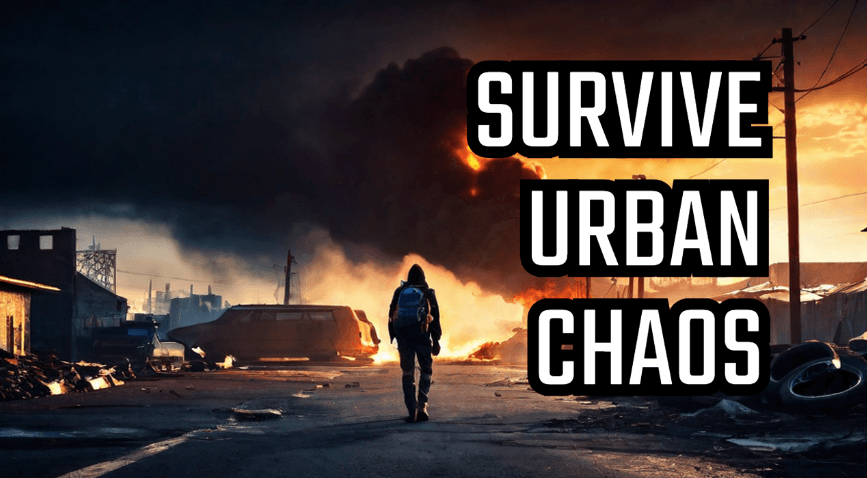
Urban escape gear isn't just about having the right equipment; it's about developing the mindset and skills to use that equipment effectively when everything around you is falling apart. The best gear in the world won't save you if you haven't practiced using it or if you freeze up when crisis hits.
Start building your urban escape capability today, not tomorrow. Begin with the basics: reliable footwear, water purification, navigation backup, and communication redundancy. Test your gear regularly. Walk your escape routes. Practice your family coordination plans.
Remember, preparedness isn't about paranoia; it's about responsibility. As a husband and father, I have a duty to ensure my family can survive whatever urban crisis might come our way. That responsibility extends to helping others in my community prepare as well.
The urban landscape is constantly changing, and new threats emerge regularly. Your gear and strategies need to evolve with these changes. Stay informed about local infrastructure vulnerabilities. Understand the unique risks in your specific urban area. Network with other prepared individuals who share your values and commitment to family protection.
Winter is approaching, and historical data shows that urban infrastructure failures spike during cold weather months. Power grids become overloaded. Water pipes freeze and burst. Transportation systems fail. Now is the time to ensure your urban escape gear is ready for seasonal challenges.
Join the On Three community where we share real-world testing results, gear reviews from actual urban scenarios, and strategies that work when theory meets reality. Subscribe to our newsletter for weekly updates on urban preparedness topics and exclusive access to field-tested gear recommendations.
What's the one urban scenario that keeps you awake at night, and are you truly prepared for it? Share your thoughts in the comments, and let's build a community of urban survivors who look out for each other.
About Jason Salyer: Jason is the founder of On Three, a survival and preparedness expert with over 20 years of experience in tactical training and family-focused emergency preparedness. A devoted husband and father, Jason combines practical survival skills with Christian values, teaching families how to prepare for uncertain times while maintaining hope and community connections. His field-tested approach to urban survival has helped a large number of families develop practical preparedness plans that work in real-world scenarios.
P.S. Share this with two people who needs insightful prepping and survival tips and hacks.
Check Out My Recommended Gear & Supplies Explore the gear and supplies I personally use and trust. When you purchase through my Amazon storefront and other affiliates, I earn a small commission at no extra cost to you. These small commissions help support the creation of informative, free content for you to enjoy.
These are the tools I trust and actually carry:
Wazoo Survival Gear
Amazon Storefront
Bear Forest Knives
Exotac Fire Tools
Tee Spring On Three Apparel
What's the worst that can happen? Let's go On Three.

